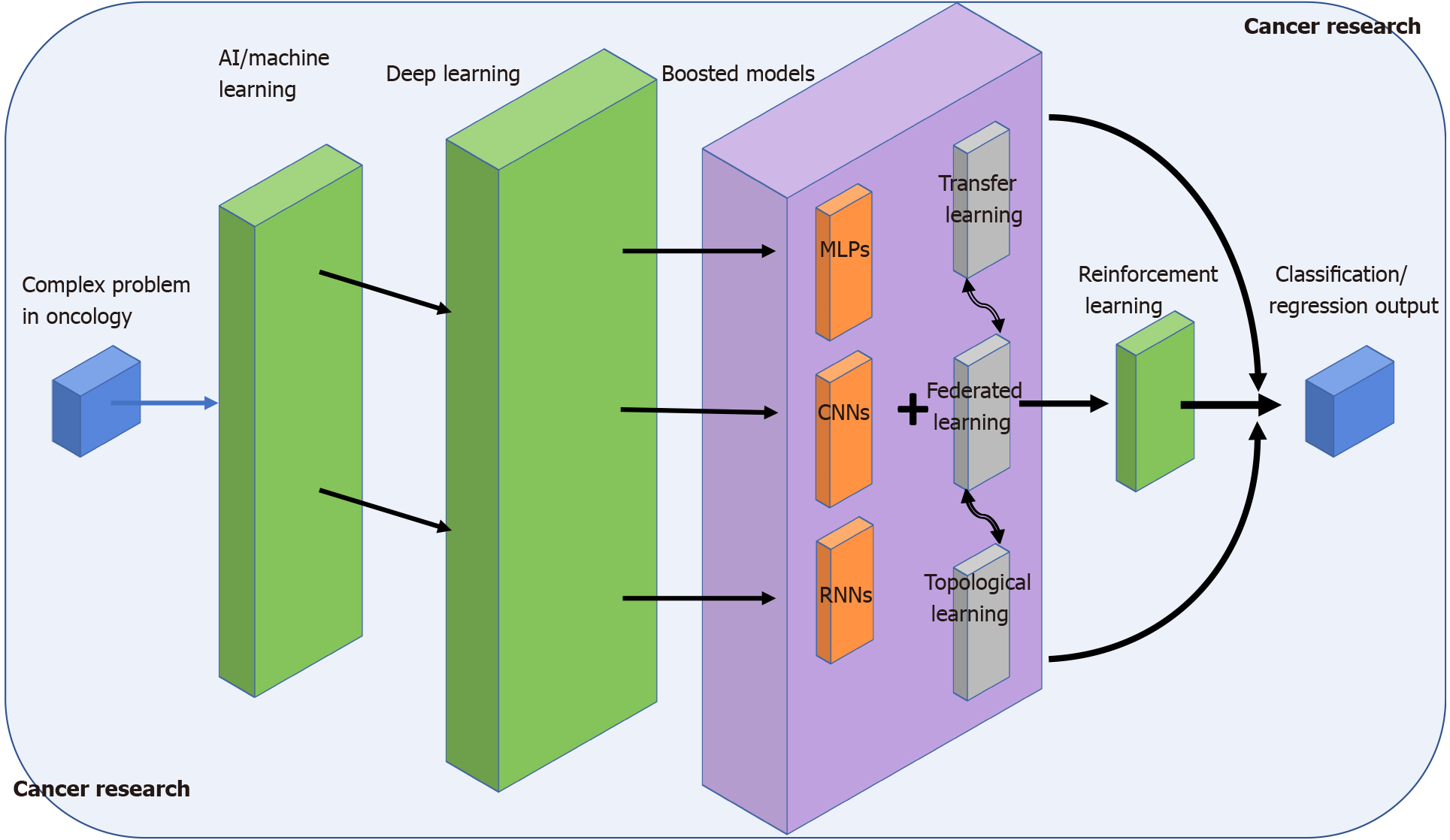Copyright
©The Author(s) 2021.
Artif Intell Cancer. Oct 28, 2021; 2(5): 60-68
Published online Oct 28, 2021. doi: 10.35713/aic.v2.i5.60
Published online Oct 28, 2021. doi: 10.35713/aic.v2.i5.60
Figure 1 Relational overview of the artificial intelligence-based models introduced in this work.
To solve any given complex problem in cancer research by means of machine learning models we can use many deep layers. Then, depending on the particular structures of data, we can empower the performance of the selected architecture, i.e., multilayer perceptron, convolutional or recurrent networks by adding learning strategies such as transfer, federated or topological learning. These strategies are interchangeable (double banded black arrows). As well, we can directly go directly from the selected architecture to the problem’s solution using reinforcement learning. AI: Artificial intelligence; MLPs: Multi-layer perceptrons; CNNs: Convolutional neural networks; RNNs: Recurrent neural networks.
- Citation: Morilla I. Repairing the human with artificial intelligence in oncology. Artif Intell Cancer 2021; 2(5): 60-68
- URL: https://www.wjgnet.com/2644-3228/full/v2/i5/60.htm
- DOI: https://dx.doi.org/10.35713/aic.v2.i5.60









